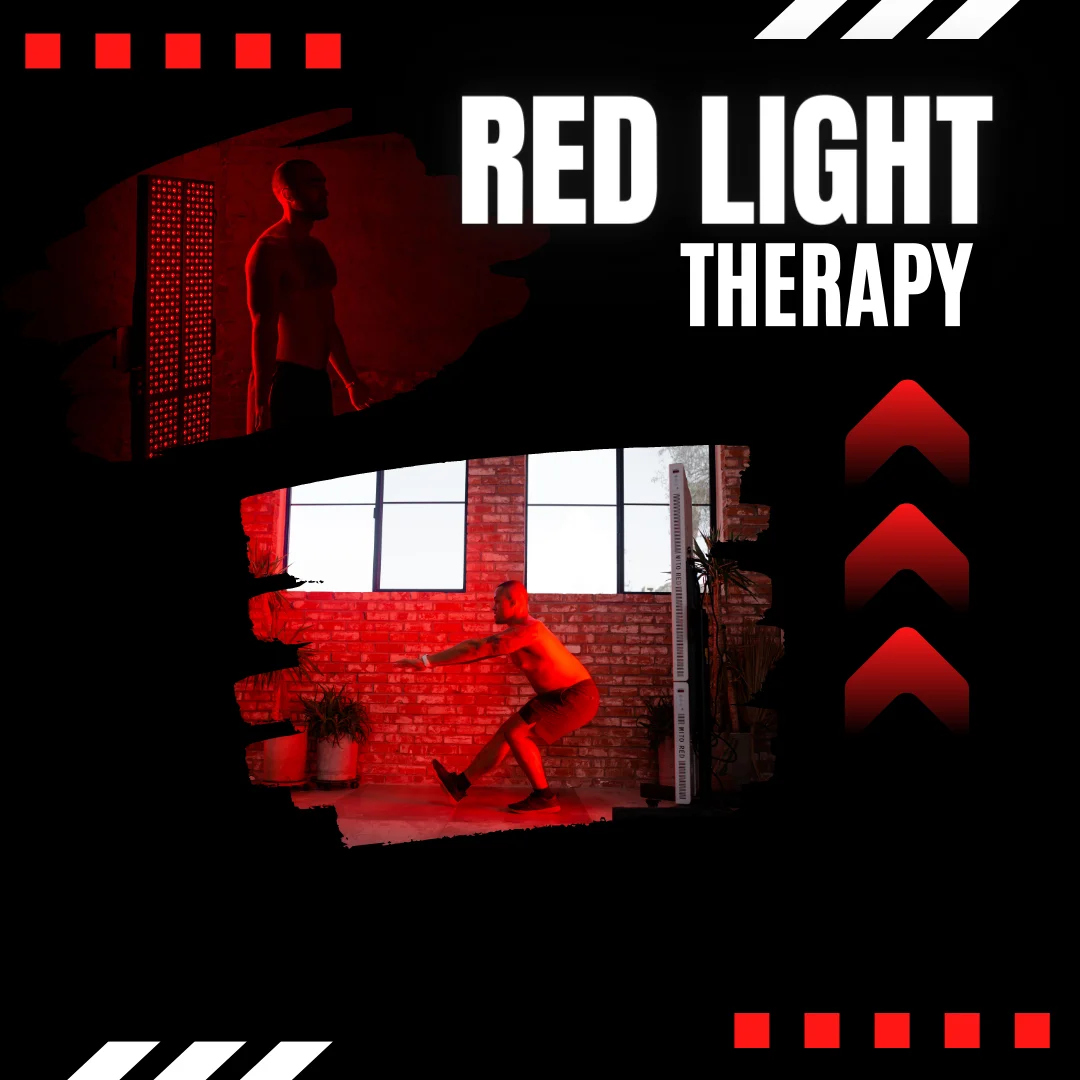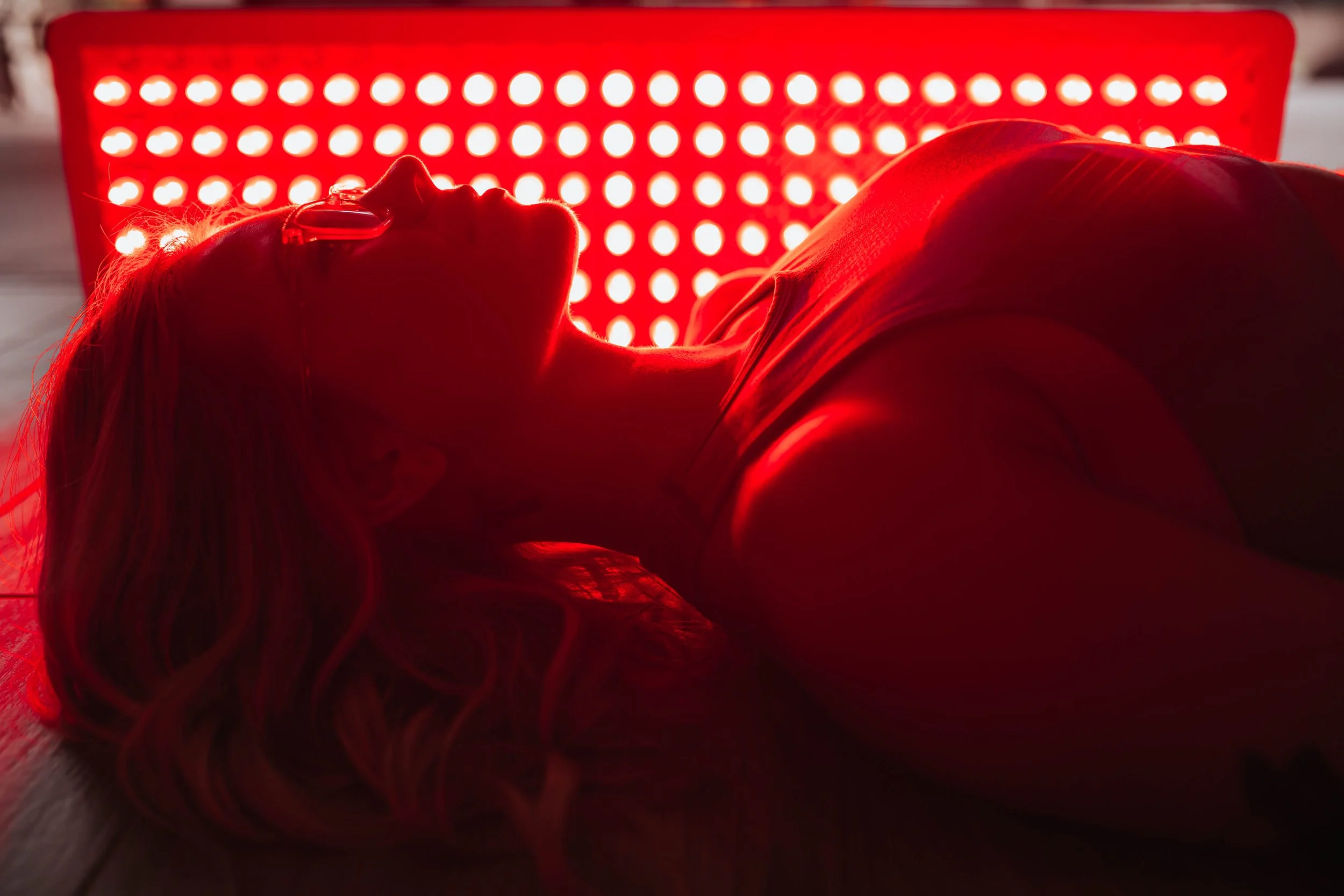The use of light or photobiomodulation is quickly becoming a popular modality to enhance recovery and improve athletic performance (4). For years the application of different light waves has been used by medical professionals to treat various skin conditions. Now, the use of red light or near-infrared light (NIR) has been shown to be able to penetrate the deep layers of skin to muscle, tendon, ligament, and bone. So how exactly does a colored light make our bodies recover more quickly, reduce soreness, improve sleep, and help build muscle? In this article we will dive into the science behind red light therapy and how active individuals can apply it to gain a competitive edge in the gym and in life!
via Mito Red Light
The Science
The light spectrum is comprised of different colors and wavelengths of light. One of the most common being, UV-B. This light wave ranges from 220-320 nm and is used clinically for the treatment of skin conditions for its ability to penetrate through the superficial layers of skin (6). Red light or NIR wavelengths range from 620-850nm and 750-1200nm, respectively (2). Meaning, red light and NIR light can travel deeper into the tissues of the human body.
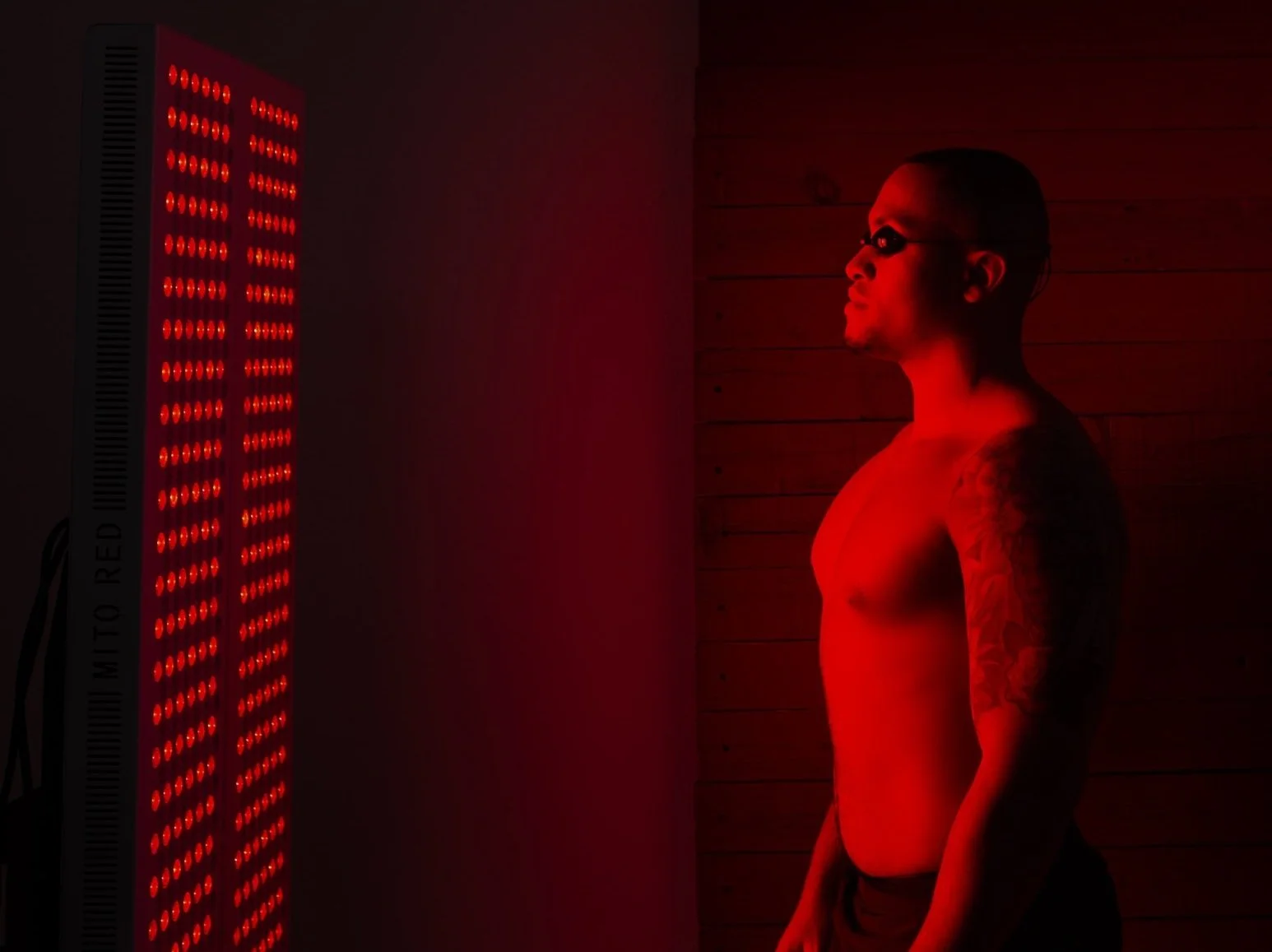
Why do we want light to penetrate the skin?
Exposure of the skin to red light or NIR light induces a reaction that stimulates the mitochondria in our cells. Mitochondria are responsible for energy production and have stores of a compound known as adenosine triphosphate (ATP). When ATP levels are increased the body’s ability to repair and restore damaged tissue is enhanced (4). During exercise muscle and soft tissue is broken down and the rebuilding of that tissue is realized as muscle growth, decreased soreness, expedited recovery, and improved performance. Studies have shown that the administration of red light therapy before or after exercise has positive effects on biomarkers related to muscle recovery and performance (1, 5, 6). Tapping into the mechanisms of light can jump start our body’s system to work at a more efficient and effective rate.
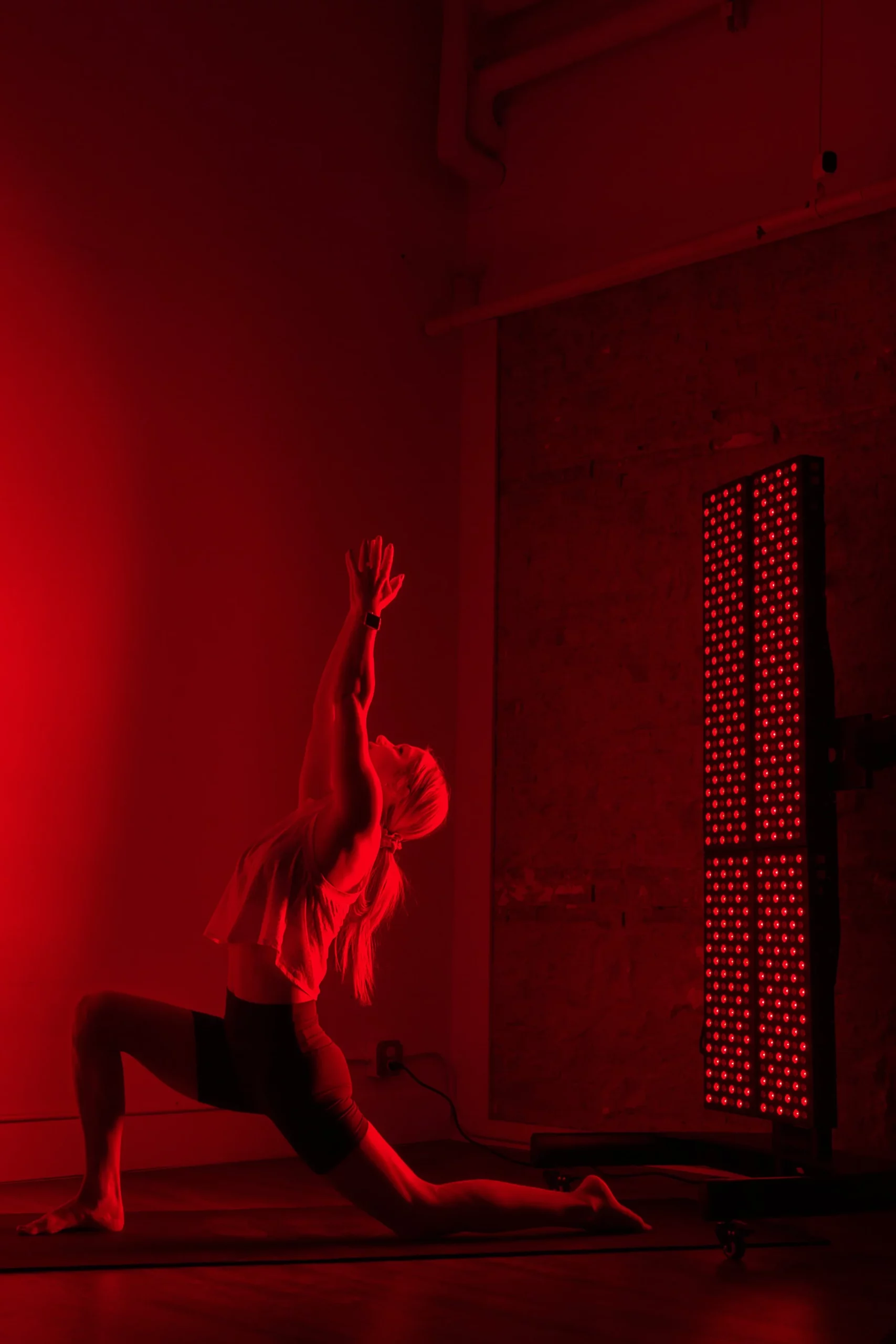
How should I use light therapy?
Here’s the good news, longer exposure is not the most optimal. Athletes and active individuals looking to experience the positive effects from red light therapy should use the modality 3-5 times a week for 5-15 minutes (3). For example, with the use of a full body red light panel, target your backside for 5 minutes and then your front for 5 minutes. That’s it, you’re good to go!
Red light and NIR therapy have exciting benefits for active individuals looking to maximize their performance and health. As with all recovery modalities, it is important to EARN YOUR RECOVERY. So don’t forget the foundations of health and wellness: sleep, nutrition, and progressive exercise. Master these areas to optimize the effects of light therapy!
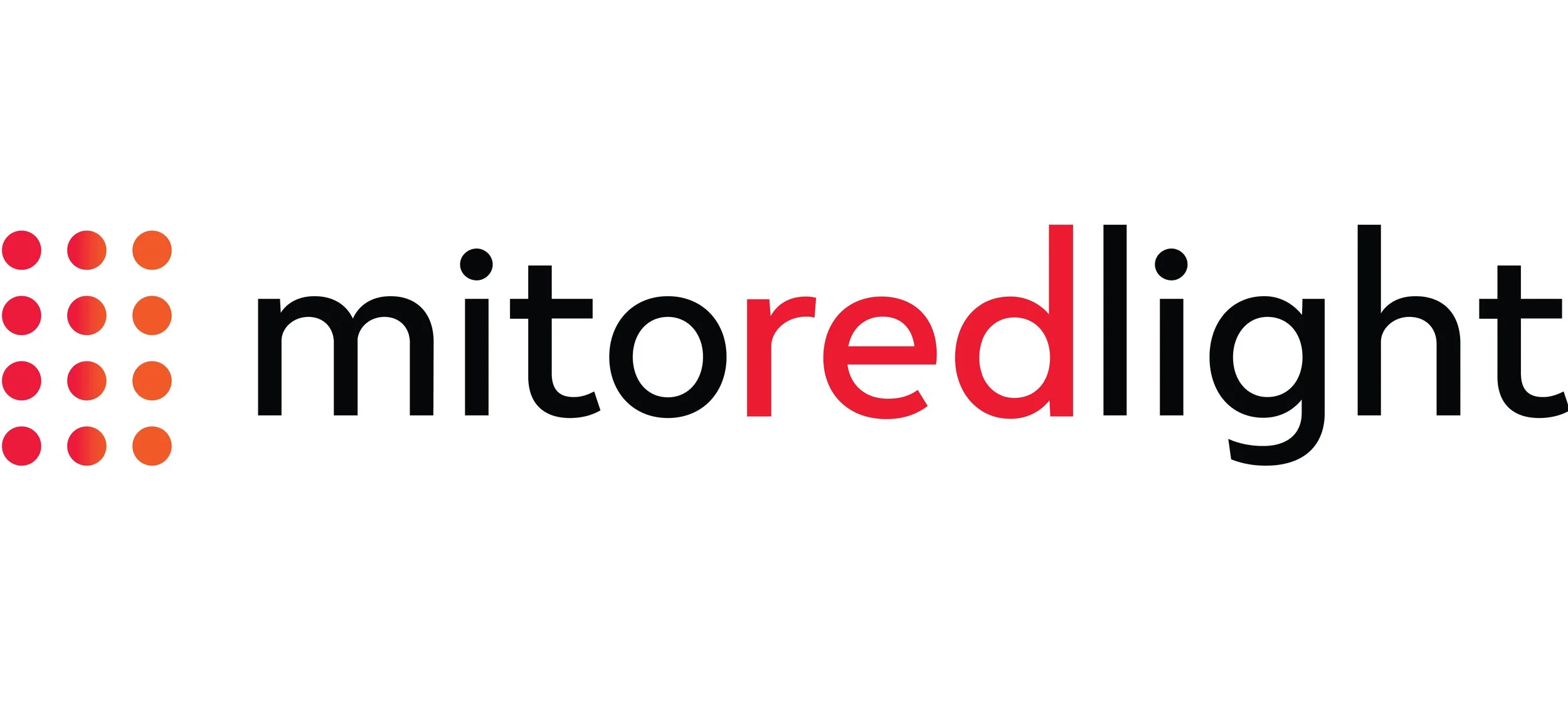
COMING SOON!
EvoFit Recovery Zone powered by Vital Force Physio
Featuring Mito Red Light panels
Movement is Vital for a healthy body and Your Body is a Force to be reckoned with,
Dr. Bryan Vranic, PT, DPT, CSCS, CF-L1
This information is not intended to be used as medical advice but for educational purposes only. We recommend that you consult your Physician or Healthcare Provider for more information and prior to use of Red Light Therapy.
References
1. Borsa PA, Larkin KA, True JM. Does phototherapy enhance skeletal muscle contractile function and postexercise recovery? A systematic review. J Athl Train. 2013;48(1):57-67. doi:10.4085/1062-6050-48.1.12
2. Chaverri S. Best wavelengths for red light therapy. Mito Red Light. https://mitoredlight.com/blogs/mito-red-blog/best-wavelengths-for-red-light-therapy. Published April 21, 2022. Accessed June 22, 2022.
3. Chaverri S. How to get the most out of your red light therapy. Mito Red Light. https://mitoredlight.com/blogs/mito-red-blog/how-to-get-the-most-out-of-your-red-light-therapy. Published November 23, 2021. Accessed June 28, 2022.
4. Ferraresi C, Huang YY, Hamblin MR. Photobiomodulation in human muscle tissue: an advantage in sports performance?. J Biophotonics. 2016;9(11-12):1273-1299. doi:10.1002/jbio.201600176
5. Leal Junior EC, Lopes-Martins RA, Frigo L, et al. Effects of low-level laser therapy (LLLT) in the development of exercise-induced skeletal muscle fatigue and changes in biochemical markers related to postexercise recovery. J Orthop Sports Phys Ther. 2010;40(8):524-532. doi:10.2519/jospt.2010.3294
6. Myers E, Kheradmand S, Miller R. An Update on Narrowband Ultraviolet B Therapy for the Treatment of Skin Diseases. Cureus. 2021;13(11):e19182. Published 2021 Nov 1. doi:10.7759/cureus.19182
7. Pinto HD, Vanin AA, Miranda EF, et al. Photobiomodulation Therapy Improves Performance and Accelerates Recovery of High-Level Rugby Players in Field Test: A Randomized, Crossover, Double-Blind, Placebo-Controlled Clinical Study. J Strength Cond Res. 2016;30(12):3329-3338. doi:10.1519/JSC.0000000000001439


